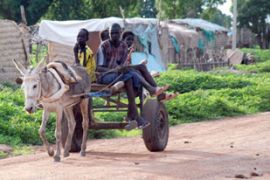Hunger warning for south Sudan
Need for food aid increases due to inter-tribal conflicts and poor rains.

In June, boats carrying food aid from WFP to the remote area of Akobo in Jonglei state were attacked and sank, forcing the organisation to start airlifting food to the displaced with the help of the United Nations peacekeeping mission in Sudan.
The violence comes as the government in Khartoum and the autonomous government in South Sudan, led by the former rebels of the Sudan People’s Liberation Movement, prepare for a referendum in 2011 on whether to split.
Food drops
With the security situation deteriorating and the rainy season getting under way, many areas are inaccessible to aid organisations and WFP is considering returning to distributing assistance by food drops.
| In depth | |||||||||
|
“We will hire larger airplanes and we will start airdropping, dropping the food from the sky,” Kenro said.
“Now you know we have done this many years during the war times, but we stopped this back in 2007 and now we have to revive the air drops again for this purpose. It’s going to be very costly but at the same time it’s going to be very much needed.”
WFP is appealing for $44m to purchase and transport the 22,000 metric tonnes of food needed to feed the hungry in the south.
Southern Sudan is the least developed region in Sudan after a two-decade civil war, which ended with the signing of peace deal in 2005, and the situation has been worsened by plummeting oil prices.
“There’s probably no other government in the region that’s been more negatively affected by the global meltdown, economic meltdown, than the government of Southern Sudan,” Liz Grand, a UN humanitarian co-ordinator for Sudan, told Al Jazeera.
“The government is almost wholly dependent on oil for its budget revenues. When the price of oil plummeted, the amount of money the government of southern Sudan had, also plummeted.”
Most of Sudan’s oil is from southern oil fields, but pipelines and other infrastructure lie in the north.
